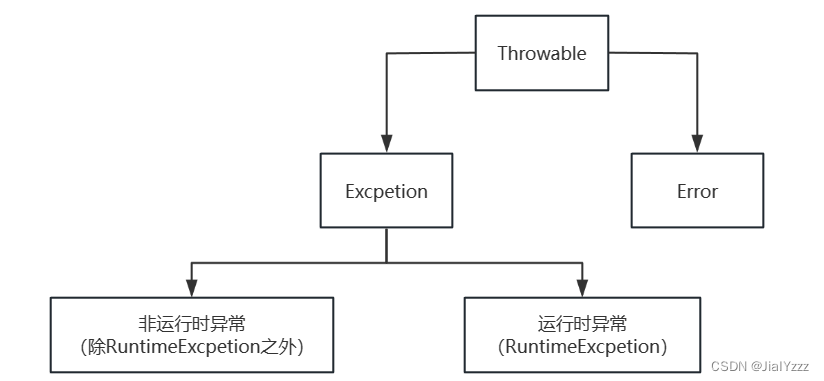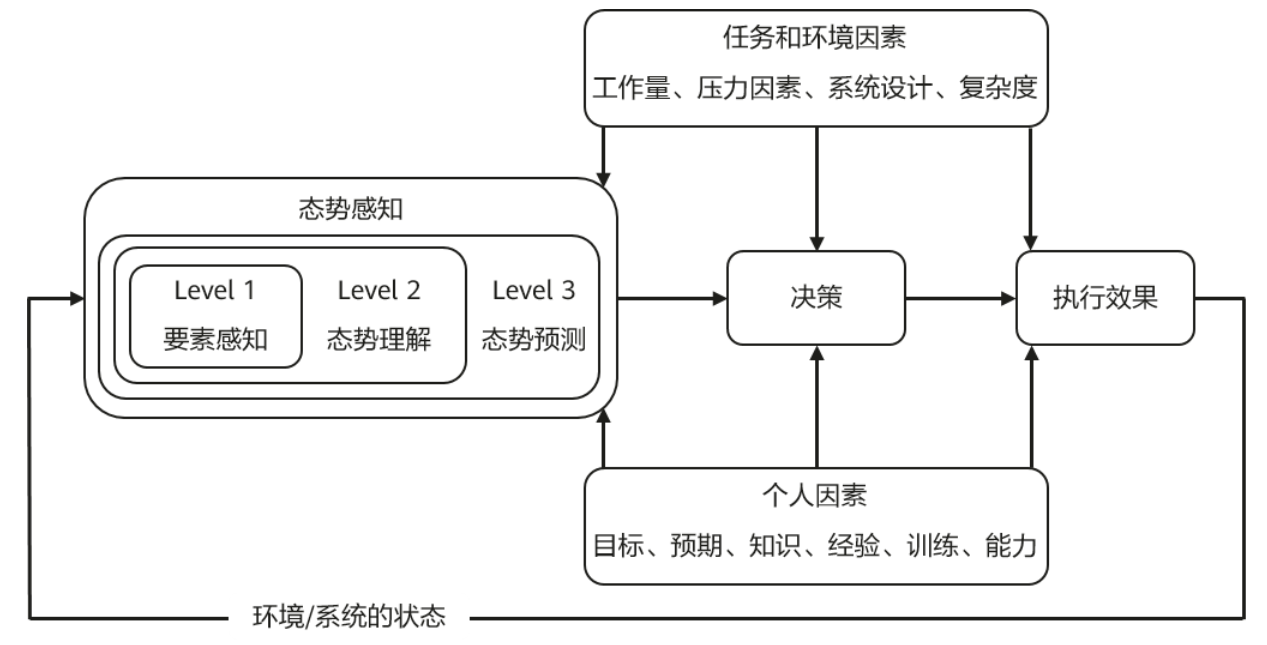DBus快速入门
参考链接:
-
中文博客:
https://www.e-learn.cn/topic/1808992
https://blog.csdn.net/u011942101/article/details/123383195
https://blog.csdn.net/weixin_44498318/article/details/115803936
https://www.e-learn.cn/topic/1808992
https://blog.csdn.net/Dontla/article/details/122530765
-
D-Bus Specification:
https://dbus.freedesktop.org/doc/dbus-specification.html
https://pythonhosted.org/txdbus/dbus_overview.html
https://dbus.freedesktop.org/doc/dbus-tutorial.html
本文主要记录一下我对dbus的认知,当然可能会存在一些错误,欢迎读者指正。
DBus安装
命令如下:
# 安装dbus
sudo apt-get install dbus
# 安装d-feet工具,用于查看 session bus 和 system bus
sudo apt-get install d-feet
# 安装glib2.0
sudo apt-get install libgtk2.0-dev
# 安装 dbus-glib
apt-get install libdbus-glib-1-dev
# for dbus-launch
apt install dbus-x11
c_cpp_properties.json配置:
主要注意includePath
{
"configurations": [
{
"name": "Linux",
"includePath": [
"${workspaceFolder}/**",
"/usr/include/dbus-1.0/",
"/usr/include/glib-2.0/",
"/usr/lib/x86_64-linux-gnu/glib-2.0/include/"
],
"defines": [],
"compilerPath": "/usr/bin/clang",
"cStandard": "c17",
"cppStandard": "c++14",
"intelliSenseMode": "linux-clang-x64"
}
],
"version": 4
}
DBus整体结构
DBus是基于本地套接字实现的IPC框架,可用于进程间的通信或进程与内核的通信。
这里贴一张官方提供的dbus整体架构图:

DBUS的优点:
-
因为DBUS主要应用在同一台机器上,不会跨主机进行IPC通信。所以使用二进制协议,省去序列化的代价。但是如果需要传递像字符串指针的话,就需要通过地址将字符串拷贝到Message中,所以或多或少还是存在一些序列化的过程。
-
DBUS的“报文”在传递时,避免了往返的开销。并且支持异步操作。
-
报文以消息的方式传递而不是(类似于TCP)字节流。
-
D-Bus 库的封装方式可以让开发人员利用其框架现有的对象/类型系统,而无需学习新的IPC的特点,然后重构他们的项目。
这里简单解释一下dbus整体架构图的一个交互流程:
在DBUS中,一个完整的IPC交互流程包括三个部分:Bus Daemon Process、Client Application Process、Server Application Process。Bus Daemon Process有两类:Session Bus、System Bus,这里本文主要讨论Session Bus,这两类Bus主要区别在于:Session Bus是主要负责应用程序之间的一个交互,而System Bus主要负责内核和应用程序之间的一个交互。Bus Daemon Process在两个应用程序交互之中起路由作用。从图中可以看到所有的应用程序和Bus Daemon Process的连接都是通过本地socket。
主要流程:
-
app1(client)和app2(server)都通过Bus Daemon Process的套接字地址连接上去。
-
app1请求一个叫com.app1.client的Bus Name,app2请求一个叫com.app2.server的Bus Name。
-
app1构造一个method calls消息,method calls消息至少包括:Dest Bus Name(目的地址,假设这里是com.app2.server)、Object Path、Interface Name 、Method Name(包括参数,这里假设是int add(int n1, int n2)),然后将消息报文发送给Bus Daemon Process。
-
Bus Daemon Process根据消息的Dest Bus Name,将消息路由给app2。
-
app2根据消息的Object Path、Interface Name 、Method Name调用相应的方法(add函数),然后根据返回值以及接收到的method calls消息封装成一条method returns消息,发回给Bus Daemon Process,进而路由给app1。
-
app1接收到method returns消息后解析出里面的返回值,于此一次交互完成。
dbus中消息有四种类型:
-
signals:信号,一般用于广播,不会有目的地址和返回值。
-
method calls:方法调用,定向传播,有目的地址,可能有返回值。
-
method returns:方法返回,简单理解就是method calls的返回值。
-
errors:错误,简单理解就是错误码。
上面流程主要用到method calls、method returns两种消息类型。
梳理了一下dbus的交互流程,其实会发现dbus和RPC非常像。不同点在于dbus更像是一种本地专用的RPC。
dbus-daemon的地址保存在环境变量DBUS_SESSION_BUS_ADDRESS中,用于表示当前登录用户的session的dbus-daemon进程的地址,可以使用下面命令查看。
root@lunar-virtual-machine:~# echo $DBUS_SESSION_BUS_ADDRESS
unix:path=/run/user/0/bus
session bus由用户登录时dbus-launch脚本自动启动,当然,你也可以自己在终端启动一个bus-daemon,方便调试:
root@lunar-virtual-machine:~# DBUS_VERBOSE=1 dbus-daemon --session --print-address
unix:abstract=/tmp/dbus-49gl7TnTcs,guid=864158a61bb94df92e3e1ac866936bd1
然后将DBUS_SESSION_BUS_ADDRESS修改为:unix:abstract=/tmp/dbus-49gl7TnTcs,guid=864158a61bb94df92e3e1ac866936bd1,再启动应用程序即可连接到自己启动的dbus-daemon上。
DBus深入理解
先下载一个dbus实例:http://www.fmddlmyy.cn/down2/hello-dbus3-0.1.tar.gz
四步构建并运行dbus服务器
./autogen.sh
./configure
make
./example-service
然后另起一个终端,执行d-feet命令,会弹出一个窗口:

双击Methods下的Add方法,会弹出一个对话框,输入参数并确认后你就会看到相加的结果。这个具体的交互过程和。上面我们分析的流程是一样的。
下面通过该窗口逐步了解DBUS的相关概念。
Bus Name: 应用和消息总线的连接标识符,有两类,包括:well-known name(熟知名)和unique name(唯一名)
well-known name形如:”org.fmddlmyy.Test“
unique name形如:”:1.114“
well-known name可以被多个连接(非同时)所拥有,unique name在所有连接中是唯一的。一个连接可以同时拥有well-known name和unique name,well-known name,但是唯一名是必须的,但熟知名不是必须的。well-known name可以类比于网络中的域名,unique name可以类比于网络中的IP地址。
当多个应用连接到消息总线,要求提供同一个公共名的服务。消息总线会把这些连接排在链表中,并选择一个连接提供公共名代表的服务。可以说这个提供服务的连接拥有了这个公共名。如果这个连接退出了,消息总线会从链表中选择下一个连接提供服务。
Native Objects and Object Paths: Native Objects类似java中的java.lang.Object、QT中的QObject等等。在最底层的dbus中纯在形式只是一个字符串。
Object Paths形如:”/TestObject“
Methods and Signals(Name): Methods表示被具体调用的方法,而Signals就是信号。Method可以有返回值,Signals一定没有返回值,此外,Signals可以进行广播,应用程序可以向bus订阅要接收的信号的Interface,一旦注册,只要DBUS收到信号,就会根据的信号的接口,将信号广播给相应的应用程序。在最底层的dbus中纯在形式只是一个字符串。
Interfaces(Name): 相当于C++中的纯虚类。每个对象都有一个或者多个接口,一个接口就是多个方法和信号的集合。在最底层的dbus中纯在形式只是一个字符串。
形如:
org.fmddlmyy.Test.Basic
org.freedesktop.DBus.Introspectable (由消息总线提供的标准接口
org.freedesktop.DBus.Properties (由消息总线提供的标准接口
在基于C实现的最底层的dbus中的对象、接口、方法、信号等概念可能很难去理解,我最开始也是比较困惑,但是如果你对dbus框架感兴趣的话,可以去了解一下dbus在面向对象的语言在的用法,比如dbus-c++,他里面的这些概念就非常直观。
因为D-BUS的底层接口没有对象相关概念,所以它的Object、Methods、Signals、Interfaces都是以字符串的形式标识。在面向对象的语言对dbus进行封装后,我们可以通过编写XML来定义接口和方法,并且通过我们编写的XML来生成相应的接口代码。接口里面就会包括方法和信号的定义。用户只用去继承这些接口,然后去实现它里面的方法即可。当然用户还需要去根据这些接口去定义相应的对象。
这里我故意漏掉了一个概念—Proxies: 代理对象用来表示其他的remote object。当触发了proxy对象的method时,将会在D-Bus上发送一个method_call的消息,并等待答复,根据答复返回。总线上的对象一般通过代理来访问。总线上的对象位于客户进程以外,而客户可以调用本地接口与对象通信,此时,本地接口充当了代理的角色。当触发了代理对象的方法时,将会在D-Bus上发送一个method_call的消息,并等待答复返回,就象使用一个本地对象一样。重点关注最后一句话!代理能够使用户去调用一个本地接口,该本地接口代替你向总线发消息,去调用另一个进程方法,并且接收返回值。简而言之,代理的概念还是要配合面向对象的语言对dbus的封装才好理解。
比如不用代理:
Message message = new Message("/remote/object/path", "MethodName", arg1, arg2);
Connection connection = getBusConnection();
connection.send(message);
Message reply = connection.waitForReply(message);
if (reply.isError()) {
}
else {
Object returnValue = reply.getReturnValue();
}
用代理就是:
Proxy proxy = new Proxy(getBusConnection(), "/remote/object/path");
Object returnValue = proxy.MethodName(arg1, arg2);
dbus规定了一个统一的接口:org.freedesktop.DBus.Introspectable,通过该接口的Introspect方法,可以递归遍历一个连接的对象树,包括server的接口和其方法、信号。另外因为Bus Daemon Process也属于进程,应用进程也可以请求Bus Daemon Process的接口和方法。Bus Daemon Process的Bus Name为:org.freedesktop.DBus,利用总线的org.freedesktop.DBus.Introspectable.Introspect方法我们可以查看消息总线对象支持的接口以及其方法、信号。此外我们还可以调用总线的\对象的org.freedesktop.DBus.ListNames方法,来获取消息总线上已连接的所有连接名,包括所有公共名和唯一名。
这些内容具体细节在https://www.e-learn.cn/topic/1808992有深入讲解,感兴趣的读者可以去看一看。
dbus是支持提供server的应用程序按需启动,在client请求的server应用程序没有启动时,daemon bus首先会依据配置起一个server应用程序。通过总线的/对象的org.freedesktop.DBus.ListActivatableNames方法,可以获取所有能够自启动的服务。
要想让自己的server应用程序自启动,需要添加一个配置文件,如下:
vim /usr/share/dbus-1/services/org.fmddlmyy.Test.service
# [D-BUS Service]
# Name=org.fmddlmyy.Test # 定义Bus Name
# Exec=/home/lvjie/work/dbus/hello-dbus3-0.1/src/example-service # 提供可执行程序的路径
dbus的方法参数、返回值类型可以是基本类型,也可以是复合类型,具体语法可以参考:https://pythonhosted.org/txdbus/dbus_overview.html。
这里简单列举一下复合类型:
数组:
ai - 32位整型数组
a(ii) - 元素类型为两个32位整型的结构体的数组
aai - 元素类型为32位整型的数组的数组
字典:
a{ss} - key为string,value为string
a{is} - key为32位整数 ⇒ value为string
a{s(ii)} - key为string ⇒ value为包含2个32位整数的数组
a{sa{ss}} - key为string ⇒ value也是字典。
DBus示例代码
Server Application:不断处理来自Client Application的方法调用。
#include <stdio.h>
#include <stdlib.h>
#include <string.h>
#include <dbus/dbus.h>
#include <unistd.h>
void reply_to_method_call(DBusMessage *msg, DBusConnection *conn){
DBusMessage *reply;
DBusMessageIter arg;
char *param = NULL;
dbus_bool_t stat = TRUE;
dbus_uint32_t level = 2010;
dbus_uint32_t serial = 0;
//从msg中读取参数
if(!dbus_message_iter_init(msg, &arg))
printf("Message has noargs\n");
else if(dbus_message_iter_get_arg_type(&arg) != DBUS_TYPE_STRING)
printf("Arg is notstring!\n");
else
dbus_message_iter_get_basic(&arg, ¶m);
if(param == NULL) return;
//创建返回消息reply
reply = dbus_message_new_method_return(msg);
//在返回消息中填入两个参数,和信号加入参数的方式是一样的。这次我们将加入两个参数。
dbus_message_iter_init_append(reply, &arg);
if(!dbus_message_iter_append_basic(&arg, DBUS_TYPE_BOOLEAN, &stat)){
printf("Out ofMemory!\n");
exit(1);
}
if(!dbus_message_iter_append_basic(&arg, DBUS_TYPE_UINT32, &level)){
printf("Out ofMemory!\n");
exit(1);
}
//发送返回消息
if(!dbus_connection_send(conn, reply, &serial)){
printf("Out of Memory\n");
exit(1);
}
dbus_connection_flush(conn);
dbus_message_unref(reply);
}
void listen_dbus()
{
DBusMessage *msg;
DBusMessageIter arg;
DBusConnection *connection;
DBusError err;
int ret;
char *sigvalue;
dbus_error_init(&err);
//创建于session D-Bus的连接
connection = dbus_bus_get(DBUS_BUS_SESSION, &err);
if(dbus_error_is_set(&err)){
fprintf(stderr, "ConnectionError %s\n", err.message);
dbus_error_free(&err);
}
if(connection == NULL)
return;
//设置一个BUS name:test.wei.dest
ret = dbus_bus_request_name(connection, "test.wei.dest", DBUS_NAME_FLAG_REPLACE_EXISTING, &err);
if(dbus_error_is_set(&err)){
fprintf(stderr, "Name Error%s\n", err.message);
dbus_error_free(&err);
}
if(ret != DBUS_REQUEST_NAME_REPLY_PRIMARY_OWNER)
return;
//要求监听某个singal:来自接口test.signal.Type的信号
dbus_bus_add_match(connection, "type='signal', interface='test.signal.Type'", &err);
dbus_connection_flush(connection);
if(dbus_error_is_set(&err)){
fprintf(stderr, "Match Error%s\n", err.message);
dbus_error_free(&err);
}
while(1){
dbus_connection_read_write(connection, 0);
msg = dbus_connection_pop_message(connection);
if(msg == NULL){
sleep(1);
continue;
}
if(dbus_message_is_signal(msg, "test.signal.Type", "Test")){
if(!dbus_message_iter_init(msg, &arg))
fprintf(stderr, "Message Has no Param");
else if(dbus_message_iter_get_arg_type(&arg) != DBUS_TYPE_STRING)
fprintf(stderr, "Param isnot string");
else{
dbus_message_iter_get_basic(&arg, &sigvalue);
fprintf(stdout, "[method_call]Got Singal withvalue : %s\n", sigvalue);
}
}else if(dbus_message_is_method_call(msg, "test.method.Type", "Method")){
//我们这里面先比较了接口名字和方法名字,实际上应当现比较路径
if(strcmp(dbus_message_get_path(msg), "/test/method/Object") == 0){
reply_to_method_call(msg, connection);
fprintf(stdout, "[method_call]Got method_call, reply to it!\n");
}
}
dbus_message_unref(msg);
}
}
int main(int argc, char **argv){
listen_dbus();
return 0;
}
Client Application:发送Method Call消息或者信号。
#include <stdio.h>
#include <stdlib.h>
#include <string.h>
#include <dbus/dbus.h>
#include <unistd.h>
//建立与session D-Bus daemo的连接,并设定连接的名字,相关的代码已经多次使用过了
DBusConnection* connect_dbus()
{
DBusError err;
DBusConnection *connection;
int ret;
//Step 1: connecting session bus
dbus_error_init(&err);
connection = dbus_bus_get(DBUS_BUS_SESSION, &err);
if(dbus_error_is_set(&err)){
fprintf(stderr, "ConnectionErr : %s\n", err.message);
dbus_error_free(&err);
}
if(connection == NULL)
return NULL;
//step 2: 设置BUS name,也即连接的名字。
ret = dbus_bus_request_name(connection, "test.wei.source", DBUS_NAME_FLAG_REPLACE_EXISTING, &err);
if(dbus_error_is_set(&err)){
fprintf(stderr, "Name Err :%s\n", err.message);
dbus_error_free(&err);
}
if(ret != DBUS_REQUEST_NAME_REPLY_PRIMARY_OWNER)
return NULL;
return connection;
}
void send_a_method_call(DBusConnection *connection,char *param)
{
DBusError err;
DBusMessage *msg;
DBusMessageIter arg;
DBusPendingCall *pending;
dbus_bool_t *stat;
dbus_uint32_t *level;
dbus_error_init(&err);
//针对目的地地址,请参考图,创建一个method call消息。Constructs a new message to invoke a method on a remote object.
msg = dbus_message_new_method_call("test.wei.dest", "/test/method/Object", "test.method.Type", "Method");
if(msg == NULL){
fprintf(stderr, "MessageNULL");
return;
}
//为消息添加参数。Appendarguments
dbus_message_iter_init_append(msg, &arg);
if(!dbus_message_iter_append_basic(&arg, DBUS_TYPE_STRING, ¶m)){
fprintf(stderr, "Out of Memory!");
exit(1);
}
//发送消息并获得reply的handle。Queues amessage to send, as withdbus_connection_send() , but also returns aDBusPendingCall used to receive a reply to the message.
if(!dbus_connection_send_with_reply(connection, msg, &pending, -1)){
fprintf(stderr, "Out of Memory!");
exit(1);
}
if(pending == NULL){
fprintf(stderr, "Pending CallNULL: connection is disconnected ");
dbus_message_unref(msg);
return;
}
dbus_connection_flush(connection);
dbus_message_unref(msg);
//waiting a reply,在发送的时候,已经获取了methodreply的handle,类型为DBusPendingCall。
// block until we recieve a reply, Block until the pendingcall is completed.
dbus_pending_call_block(pending);
//get the reply message,Gets thereply, or returns NULL if none has been received yet.
msg = dbus_pending_call_steal_reply(pending);
if (msg == NULL) {
fprintf(stderr, "ReplyNull\n");
exit(1);
}
// free the pendingmessage handle
dbus_pending_call_unref(pending);
// read the parameters
if(!dbus_message_iter_init(msg, &arg))
fprintf(stderr, "Message hasno arguments!\n");
else if (dbus_message_iter_get_arg_type(&arg) != DBUS_TYPE_BOOLEAN)
fprintf(stderr, "Argument isnot boolean!\n");
else
dbus_message_iter_get_basic(&arg, &stat);
if (!dbus_message_iter_next(&arg))
fprintf(stderr, "Message hastoo few arguments!\n");
else if (dbus_message_iter_get_arg_type(&arg) != DBUS_TYPE_UINT32 )
fprintf(stderr, "Argument isnot int!\n");
else
dbus_message_iter_get_basic(&arg, &level);
printf("Got Reply: %d,%d\n", stat, level);
dbus_message_unref(msg);
}
int send_a_signal(DBusConnection *connection, char *sigvalue)
{
DBusError err;
DBusMessage *msg;
DBusMessageIter arg;
dbus_uint32_t serial = 0;
int ret;
//步骤3:发送一个信号
//根据图,我们给出这个信号的路径(即可以指向对象),接口,以及信号名,创建一个Message
if((msg = dbus_message_new_signal("/test/signal/Object", "test.signal.Type", "Test"))== NULL){
fprintf(stderr, "MessageNULL\n");
return -1;
}
//给这个信号(messge)具体的内容
dbus_message_iter_init_append(msg, &arg);
if(!dbus_message_iter_append_basic(&arg, DBUS_TYPE_STRING, &sigvalue)){
fprintf(stderr, "Out OfMemory!\n");
return -1;
}
//步骤4: 将信号从连接中发送
if(!dbus_connection_send(connection, msg, &serial)){
fprintf(stderr, "Out of Memory!\n");
return -1;
}
dbus_connection_flush(connection);
printf("Signal Send\n");
//步骤5: 释放相关的分配的内存。
dbus_message_unref(msg);
return 0;
}
int main(int argc, char **argv)
{
DBusConnection *connection;
connection = connect_dbus();
if(connection == NULL)
return -1;
if (argc > 1) {
send_a_method_call(connection,"Hello, D-Bus");
} else {
send_a_signal(connection, "Hello,world!");
}
return 0;
}
gcc -Wall -o server server.c -ldbus-1 -I/usr/include/dbus-1.0/ -I/usr/include/glib-2.0/ -I/usr/lib/x86_64-linux-gnu/glib-2.0/include/ -I/usr/lib/x86_64-linux-gnu/dbus-1.0/include/
gcc -Wall -o client client.c -ldbus-1 -I/usr/include/dbus-1.0/ -I/usr/include/glib-2.0/ -I/usr/lib/x86_64-linux-gnu/glib-2.0/include/ -I/usr/lib/x86_64-linux-gnu/dbus-1.0/include/
结果如下:

本章完结


















